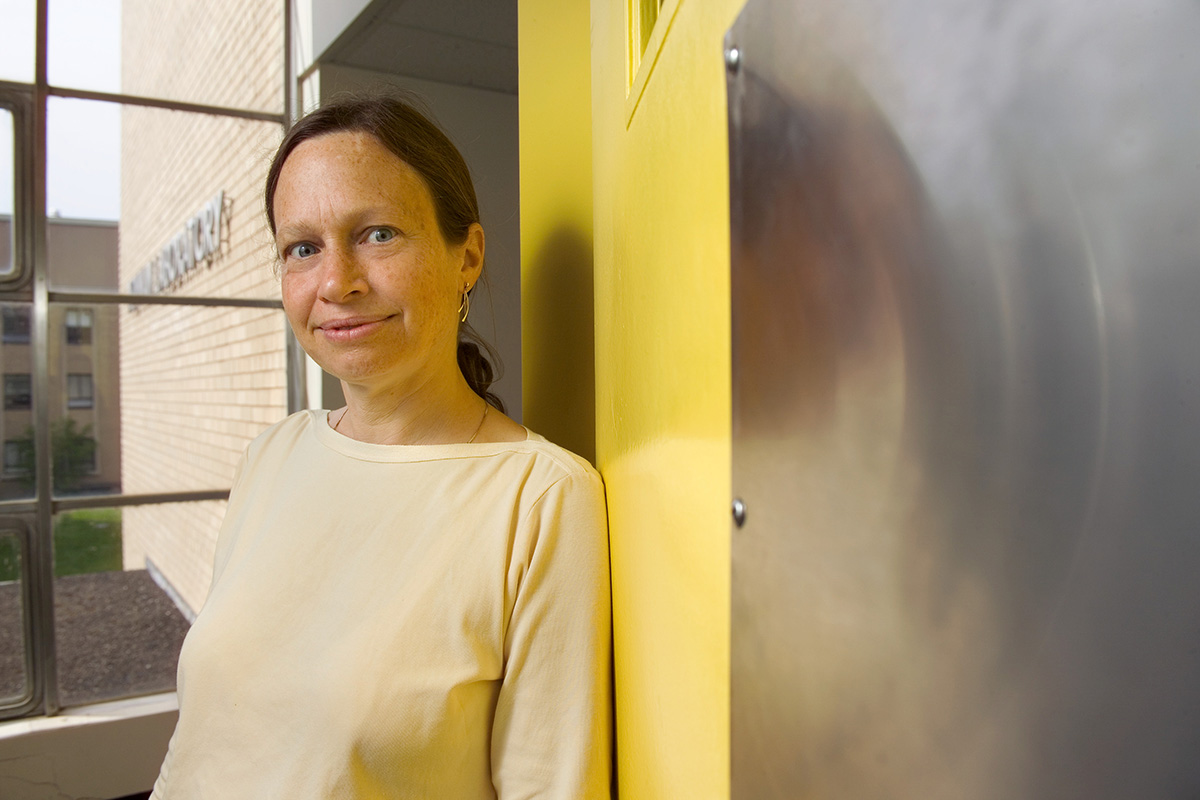$23M NSF grant powers new science, technology center
By Rick Ryan

A collaboration of scientists, led by Cornell University, has been awarded $23 million by the National Science Foundation to increase the intensity of beams of charged particles while lowering the cost of key accelerator technologies. This Science and Technology Center (STC) will contribute to scientific advances in disciplines including chemistry and biology by enhancing accelerator capabilities.
Particle accelerators generate powerful X-ray and electron beams that reveal the structure of biological molecules and materials, produce collisions that replicate conditions in the early universe or reveal the structure of the proton, and serve critical functions in manufacturing.
“Beam science enables these devices, but questions in beam science require a new approach,” said Ritchie Patterson, principal investigator for the Center for Bright Beams (CBB) at Cornell. “To realize the full potential of beams for science and industry, we need to combine the expertise of accelerator physicists with the knowledge and tools of scientists and mathematicians from a wide range of disciplines.”
That is precisely what CBB proposes to do, with experts in physical chemistry, materials science, condensed matter physics, plasma physics and mathematics strengthening accelerator scientists from around the country.
The new center, which includes leaders from the Cornell Laboratory for Accelerator-based Sciences and Education (CLASSE), will investigate three inseparable themes of particle accelerators: beam production, beam acceleration, and beam transport and storage.
This center’s overarching research goal is to increase the intensity (brightness) of charged particle beams by a factor of 100, thus enabling ultra-fast electron imaging for materials science and biology, extending the reach of particle colliders, and offering new tools to the semiconductor industry for the creation and inspection of integrated circuits.
For many years, scientists at Cornell and elsewhere have increased beam brightness through clever design of devices for beam production, acceleration and transport, and through largely trial-and-error improvements in materials processing. This strategy has led to enormous advances, benefiting the Cornell Electron Storage Ring and many other accelerators, but it is now reaching its limits. As a result, scientists do not control or even understand all of the factors that contribute to surface resistance, which drives both the length of an accelerator and its energy efficiency, and similar questions remain for other key accelerator technologies. Answering the open scientific questions in beam science requires a new approach.
“Our vision is to develop the fundamental knowledge that is required to improve the performance and lower the costs of accelerator technologies,” said Steven Sibener, one of the center’s leaders and physical chemistry professor at the University of Chicago. “We will leverage the diverse experience available at universities and national labs, and will transfer the knowledge and technology back to them.”
Roughly 10,000 U.S. researchers rely on beams of electrons or photons for physics, chemistry, materials science, biology and medicine. By enhancing the capabilities of the accelerators essential to research in these fields, the Center for Bright Beams will improve the performance of small laboratory instruments and industrial tools as well as large colliders and X-ray sources.
The center’s industrial partners will incorporate their inventions into instruments for manufacturing integrated circuits, producing medical radioisotopes and developing new pharmaceuticals. CBB will transfer their bright beam technology to market leaders in accelerator components, electron microscopy, photolithography and semiconductor inspection.
Along with Patterson and Sibener, the project funded by the STC Integrative Partnerships program includes researchers and collaborators at the University of California-Los Angeles, the University of Florida, the University of Maryland at College Park, Brigham Young University, Morehouse College, Clark Atlanta University and Chicago State University. Scientists at Lawrence Berkeley National Laboratory, Fermi National Accelerator Laboratory, the University of Toronto and TRIUMF will also contribute their expertise.
Rick Ryan is a science communicator for CLASSE.
Media Contact
Get Cornell news delivered right to your inbox.
Subscribe